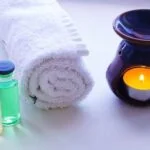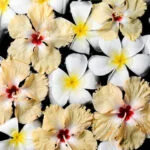Exotics Aromatherapy Chamomile is a natural remedy that has been used for centuries to promote relaxation and overall well-being. The use of chamomile in aromatherapy offers a range of benefits, including its calming properties and potential to alleviate stress and anxiety. This article will delve into the origins, science, exotic varieties, aromatherapy techniques, mental health effects, personal experiences, and future advancements of exotics aromatherapy chamomile.
Chamomile has a rich history and cultural significance in aromatherapy, with its origins dating back to ancient civilizations where it was revered for its healing properties. The chemical composition of chamomile contributes to its therapeutic effects, making it a popular choice in various holistic practices. Furthermore, there are rare and exotic varieties of chamomile that offer unique properties and potential benefits when used in aromatherapy.
In the following sections, we will explore the different ways chamomile can be incorporated into aromatherapy techniques to promote relaxation and improve mental health. Additionally, personal stories and experiences of using exotic chamomile in aromatherapy will be shared to provide insights into the practical applications of this natural remedy. Lastly, we will take a look at the future of exotics aromatherapy chamomile and the potential advancements and innovations in using this ancient botanical in modern holistic practices.
The Origins of Chamomile
Chamomile has been used for centuries as a natural remedy for various health issues. Its use in aromatherapy can be traced back to ancient civilizations, including the Egyptians, Greeks, and Romans. The word “chamomile” is derived from the Greek words “khamai,” meaning “on the ground,” and “mēlon,” meaning “apple,” due to its pleasant apple-like aroma. This aromatic herb has played a significant role in the history of herbal medicine and aromatherapy due to its calming and soothing properties.
Historical Use of Chamomile
Throughout history, chamomile has been revered for its medicinal properties and was commonly used in ancient Egypt for treating fevers and skin conditions. The Greeks also valued chamomile for its anti-inflammatory properties, using it to alleviate digestive issues and promote relaxation. Similarly, the Romans utilized chamomile as a remedy for various ailments. These historical uses of chamomile laid the foundation for its eventual incorporation into aromatherapy practices.
Cultural Significance
In addition to its historical use, chamomile holds cultural significance in many regions around the world. In certain cultures, chamomile is widely regarded as a symbol of peace, purity, and tranquility. Its association with relaxation and stress relief has made it a popular ingredient in teas, essential oils, and aromatherapy blends. Whether consumed as a tea or utilized in aromatherapy practices, chamomile continues to hold deep cultural significance across different societies.
Modern Adoption in Aromatherapy
The historical and cultural relevance of chamomile has led to widespread adoption in modern-day aromatherapy practices. As people seek natural remedies for their mental and physical well-being, chamomile’s rich history makes it an attractive option for use in aromatherapy. Its versatility allows it to be incorporated into various blends and applications that cater to different individual needs, making it an essential component of many aromatherapy routines.
The Science Behind Chamomile
Chamomile, particularly exotic varieties, has been used for centuries due to its numerous health benefits. In aromatherapy, chamomile is known for its calming and soothing properties, making it a popular choice for reducing stress, anxiety, and promoting better sleep. The chemical properties of chamomile play a significant role in its therapeutic effects, making it an essential ingredient in many aromatherapy practices.
The main chemical components of chamomile essential oil are bisabolol, bisabolol oxide A and B, azulene, and chamazulene. Bisabolol is known for its anti-inflammatory and skin healing properties. Azulene and chamazulene give chamomile its distinctive blue color and are effective at reducing inflammation and promoting relaxation. These chemical compounds contribute to the medicinal properties of chamomile that make it a valuable tool in aromatherapy.
In addition to its calming effects, exotic varieties of chamomile also have antimicrobial and antioxidant properties. This makes them beneficial for treating skin conditions, such as eczema or acne, as well as supporting overall health and well-being. The versatility of these chemical properties allows for various applications of exotic chamomile in aromatherapy techniques.
- Bisabolol
- Bisabolol oxide A and B
- Azulene
- Chamazulene
These chemical components not only give exotic chamomile its unique aroma but also contribute to its therapeutic benefits when used in aromatherapy practices. Whether through inhalation or topical application, the science behind chamomile demonstrates why it has remained a staple in traditional medicine and continues to be valued in modern holistic wellness approaches.
Exotic Varieties of Chamomile
Chamomile is a popular herb known for its calming and soothing properties, which makes it an excellent choice for aromatherapy. However, there are different varieties of chamomile that offer unique properties and benefits. Here are some exotic varieties of chamomile that are worth exploring for their distinct characteristics:
- German Chamomile (Matricaria chamomilla): This variety is known for its anti-inflammatory properties and is often used to soothe skin irritations and reduce redness.
- Roman Chamomile (Chamaemelum nobile): With its sweet apple-like aroma, Roman chamomile is often used for promoting relaxation and sleep. It also has anti-anxiety properties, making it a popular choice for addressing stress-related issues.
- Moroccan Chamomile (Ormenis multicaulis): This rare variety of chamomile has a warm, straw-like scent with hints of honey. It is prized for its ability to ease tension and promote a sense of calm, making it ideal for use in aromatherapy blends targeting stress relief.
These exotic chamomile varieties offer a range of therapeutic benefits beyond the traditional uses of chamomile in aromatherapy. Whether you’re looking to address specific skin concerns, achieve deep relaxation, or manage stress levels, these unique chamomile varieties provide versatile options for personalized aromatherapy experiences.
Incorporating these exotic chamomile varieties into your aromatherapy practice can add depth and diversity to your essential oil collection. By understanding the unique properties of each variety, you can tailor your blends to target specific wellness goals and enhance the overall effectiveness of your aromatherapy treatments.
Whether you’re an experienced practitioner or new to the world of aromatherapy, exploring these exotic chamomile varieties can open up exciting opportunities for creating custom blends that cater to individual needs and preferences. The diverse array of aromatic profiles and therapeutic benefits offered by these rare chamomiles make them valuable additions to any aromatherapy arsenal.
Aromatherapy Techniques With Chamomile
When it comes to incorporating chamomile into aromatherapy practices, there are numerous techniques and methods that can be utilized to maximize the benefits of this exotic herb. From essential oils to herbal teas, chamomile offers a wide range of options for individuals looking to harness its therapeutic properties.
Diffusion
One of the most popular ways to use chamomile in aromatherapy is through diffusion. By adding a few drops of chamomile essential oil to a diffuser, individuals can fill their space with the calming and soothing aroma of chamomile. This method is especially effective for creating a relaxing atmosphere at home or in a spa setting, helping to promote feelings of tranquility and peace.
Topical Application
Another common technique for incorporating chamomile into aromatherapy practices is through topical application. Chamomile essential oil can be diluted with a carrier oil such as sweet almond or coconut oil, and then massaged onto the skin. This method not only allows for absorption through the skin but also provides the added benefits of massage therapy, promoting relaxation and tension relief.
Inhalation
Inhalation is also an effective way to experience the benefits of chamomile in aromatherapy. Whether through steam inhalation or simply by inhaling the aroma directly from an open bottle of chamomile essential oil, this method can help alleviate symptoms of stress and anxiety while promoting mental clarity and calmness.
By exploring these various techniques for incorporating chamomile into aromatherapy practices, individuals can take advantage of its therapeutic properties in a way that best suits their needs and preferences. Whether through diffusion, topical application, or inhalation, chamomile has much to offer in terms of promoting overall well-being and relaxation.
Overall, integrating exotics aromatherapy chamomiles such as Roman Chamomile or German Chamomile into everyday wellness routines can have transformative effects on mental health and overall well-being. With its myriad benefits and versatile application methods, chamomile proves itself as an indispensable tool in achieving holistic wellness objectives.
Chamomile and Mental Health
Chamomile is a widely recognized herb in the world of aromatherapy, known for its calming and therapeutic effects on mental health. The use of chamomile for stress, anxiety, and sleep disorders dates back centuries, with its soothing properties being well-documented across various cultures. In aromatherapy, chamomile is often used to promote relaxation and alleviate symptoms of tension and unease.
The chemical composition of chamomile contributes to its beneficial effects on mental health. Chamomile contains compounds such as apigenin, luteolin, and patuletin, which are known for their anti-anxiety and sedative properties. These compounds work synergistically to help reduce stress and anxiety while promoting a sense of calm and tranquility. Additionally, the gentle floral aroma of chamomile has been found to have a relaxing effect on the mind and body.
Aromatherapy techniques with chamomile can be personalized based on individual needs and preferences. Inhalation methods such as using chamomile essential oil in a diffuser or adding a few drops to a warm bath can create a peaceful ambiance that aids in stress relief. Similarly, topical applications of diluted chamomile oil or incorporating chamomile into massage oils offer direct benefits for relaxation. When used consistently as part of an aromatherapy routine, chamomile can contribute to improved overall mental well-being.
| Chamomile Benefits | Chemical Properties |
|---|---|
| Calming effects on stress and anxiety | Contains compounds like apigenin and luteolin |
| Promotes relaxation for sleep disorders | Patuletin contributes to sedative properties |
| Aids in reducing tension and unease | Floral aroma has a relaxing effect |
Experiencing Exotic Chamomile
Experiencing the soothing effects of exotic chamomile in aromatherapy can be a truly transformative and therapeutic experience. Many individuals have shared personal stories and experiences of using exotic chamomile in their aromatherapy practices, highlighting the diverse benefits and unique properties of this ancient herb. With its calming and relaxing effects, exotic chamomile has been cherished for centuries for its ability to promote overall well-being and emotional balance.
For instance, individuals have reported feeling an overwhelming sense of calm and tranquility after incorporating exotic chamomile into their aromatherapy routines. The gentle yet potent fragrance of exotic chamomile can create an atmosphere of peace and serenity, allowing individuals to alleviate stress and anxiety while enhancing their mental clarity.
Whether used in diffusers, bath oils, or massage blends, the aromatic qualities of exotic chamomile have been praised for their ability to uplift the spirit and promote a sense of inner harmony.
Furthermore, many people have found relief from sleep disorders by using exotic chamomile in their aromatherapy practices. The relaxing properties of this herb can help induce a state of relaxation that is conducive to a restful night’s sleep. By incorporating exotic chamomile into bedtime rituals or creating calming room sprays, individuals have reported experiencing improved sleep quality and overall well-being.
In addition to its emotional and mental health benefits, the topical application of exotic chamomile in aromatherapy has also been shown to alleviate skin irritation and promote a healthy complexion. The anti-inflammatory properties of this herb make it an excellent choice for skincare formulations, providing natural relief for conditions such as eczema or dermatitis. As such, many individuals have shared their success stories of using exotic chamomile-infused skincare products to achieve radiant and healthy skin.
| Personal Experiences | Benefits |
|---|---|
| Feeling calm & tranquil | Promotes emotional balance |
| Relief from sleep disorders | Improves sleep quality |
| Alleviates skin irritation | Promotes healthy complexion |
The Future of Exotics Aromatherapy Chamomile
In conclusion, the future of exotics aromatherapy chamomile holds great potential for advancements and innovations in using exotic chamomile in aromatherapy practices. As our understanding of the science behind chamomile continues to evolve, so does our ability to harness its benefits in new and innovative ways. With ongoing research into the chemical properties and health benefits of chamomile, we can anticipate the development of new techniques and applications for incorporating chamomile into aromatherapy practices.
Furthermore, the exploration of rare and exotic varieties of chamomile opens up opportunities for unique properties and therapeutic benefits that have yet to be fully understood or utilized. By delving into the origins and cultural significance of these exotic varieties, we can gain a deeper appreciation for the diversity within the chamomile family and its potential impact on aromatherapy.
As more individuals share their personal experiences with using exotic chamomile in aromatherapy, we also gain valuable insights into its effectiveness in promoting mental health and overall well-being. The calming and therapeutic effects of chamomile on stress, anxiety, and sleep disorders present exciting possibilities for the future of aromatherapy practices.
With continued interest and exploration in this field, we can look forward to a future where exotic aromatherapy chamomile plays a central role in enhancing both physical and emotional wellness.
Frequently Asked Questions
What Is Chamomile Aromatherapy Good For?
Chamomile aromatherapy is good for promoting relaxation and reducing stress. The calming and soothing scent of chamomile essential oil can help to ease tension, anxiety, and promote better sleep.
Why Is Chamomile Essential Oil So Expensive?
Chamomile essential oil is often expensive due to the large amount of plant material required to produce a small amount of the oil. Additionally, the extraction process for chamomile oil can be time-consuming and labor-intensive, contributing to its high cost.
Does Chamomile Essential Oil Help With Anxiety?
Chamomile essential oil is believed to help with anxiety due to its calming properties. When used in aromatherapy or diluted and applied topically, chamomile oil may help to reduce feelings of anxiety, promote relaxation, and improve overall emotional well-being.

Are you looking for a natural way to improve your health and wellbeing?
If so, aromatherapy may be the answer for you.





